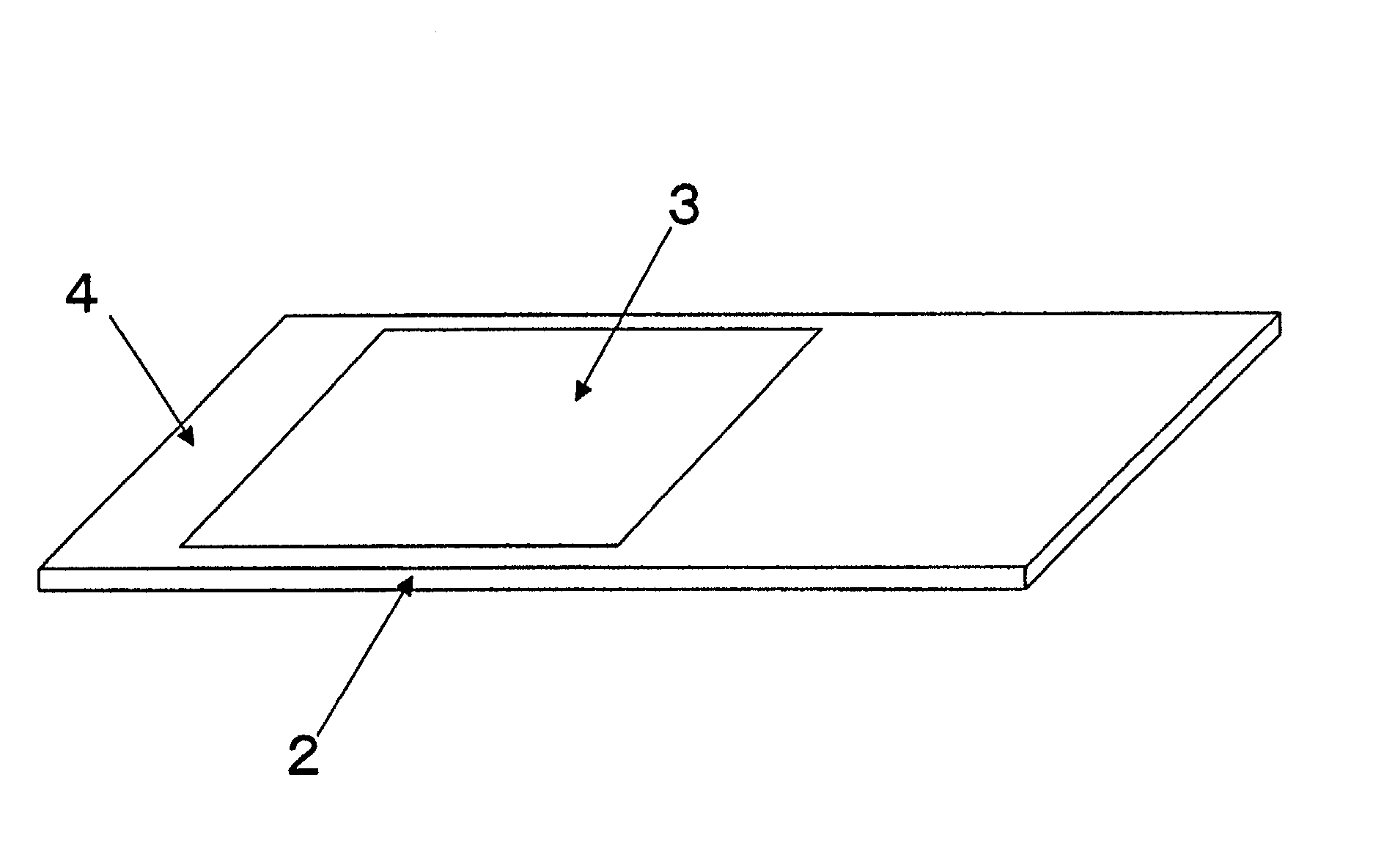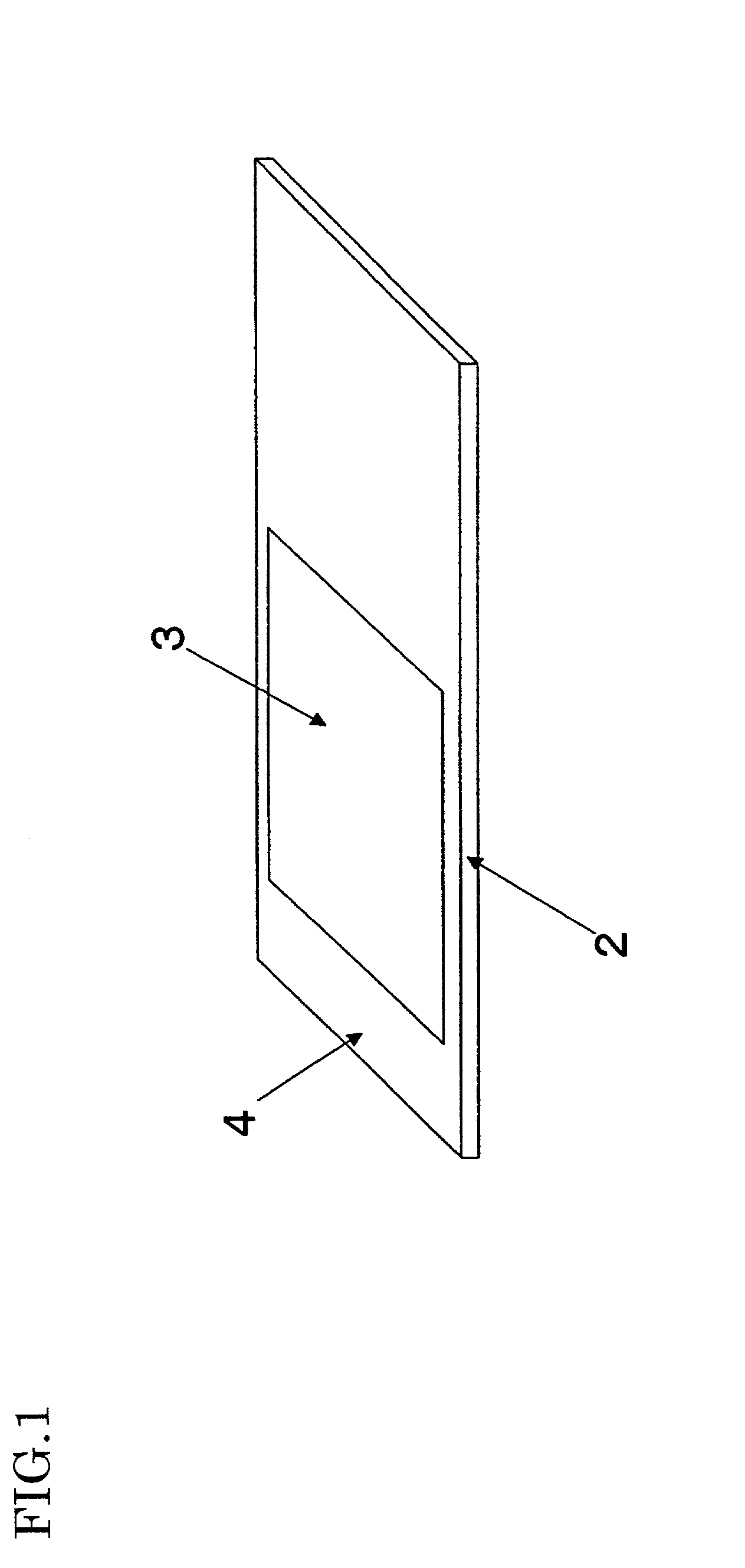Hybridization device
- Summary
- Abstract
- Description
- Claims
- Application Information
AI Technical Summary
Benefits of technology
Problems solved by technology
Method used
Image
Examples
embodiment 1
[0025] FIG. 1 is a schematic view showing a structure of a hybridization device according Embodiment 1 of the present invention. A silicone-rubber-based sheet 2 has a hydrophilic region 3 and a hydrophobic region 4. The hydrophilic region 3 is a region that faces a DNA-fixed (generally biopolymer-fixed) region of a substrate (not shown) and the hydrophobic region 4 is a surface region of the sheet 2 surrounding the hydrophilic region 3. The thickness of the sheet 2 is about 1 mm. The substrate on which the probe biopolymers are fixed is made of glass, plastic, metal or the like. The dimensions of the slide glass commonly used as the substrate is 76.times.26 mm.sup.2 according to the Japanese standard, 3.times.1 inch.sup.2 (25.4 mm.sup.2) according to the American standard, and 25.times.75 mm.sup.2 according to the European standard. Silicone rubber is generally hydrophobic and glass is hydrophilic.
[0026] By way of example, a method for performing hybridization reaction using the sil...
embodiment 2
[0038] Since the hollow 6 is formed , a larger amount of sample solution can be enclosed, which is preferable for a long-time hybridization reaction.
embodiment 3
[0039] FIG. 5 is a schematic view showing a structure of a hybridization device according to According to this embodiment, a silicone-rubber-based sheet 8 has a plurality of hollows 9 on its surface corresponding to DNA-fixed (generally biopolymer-fixed) regions of a plurality of slide glasses. The surfaces of the hollows 9 are made hydrophilic. The region surrounding the hollows 9 remains hydrophobic as a hydrophobic region 10.
[0040] According to Embodiment 3, hybridization reaction can be carried out for a plurality of slide glasses by using the sheet 8, thereby simplifying manipulation.
[0041] The present invention is not limited to the above-described embodiments.
[0042] The present invention also contemplates a hybridization device comprising a combination of a slide glass fixed with probe biopolymers and the above-described sheet.
[0043] Instead of using a photocatalist semiconductor material, the hydrophilic property can be achieved by applying a hydrophilic coating.
[0044] The ...
PUM
| Property | Measurement | Unit |
|---|---|---|
| Time | aaaaa | aaaaa |
| Hydrophilicity | aaaaa | aaaaa |
| Affinity | aaaaa | aaaaa |
Abstract
Description
Claims
Application Information
 Login to View More
Login to View More - R&D
- Intellectual Property
- Life Sciences
- Materials
- Tech Scout
- Unparalleled Data Quality
- Higher Quality Content
- 60% Fewer Hallucinations
Browse by: Latest US Patents, China's latest patents, Technical Efficacy Thesaurus, Application Domain, Technology Topic, Popular Technical Reports.
© 2025 PatSnap. All rights reserved.Legal|Privacy policy|Modern Slavery Act Transparency Statement|Sitemap|About US| Contact US: help@patsnap.com



